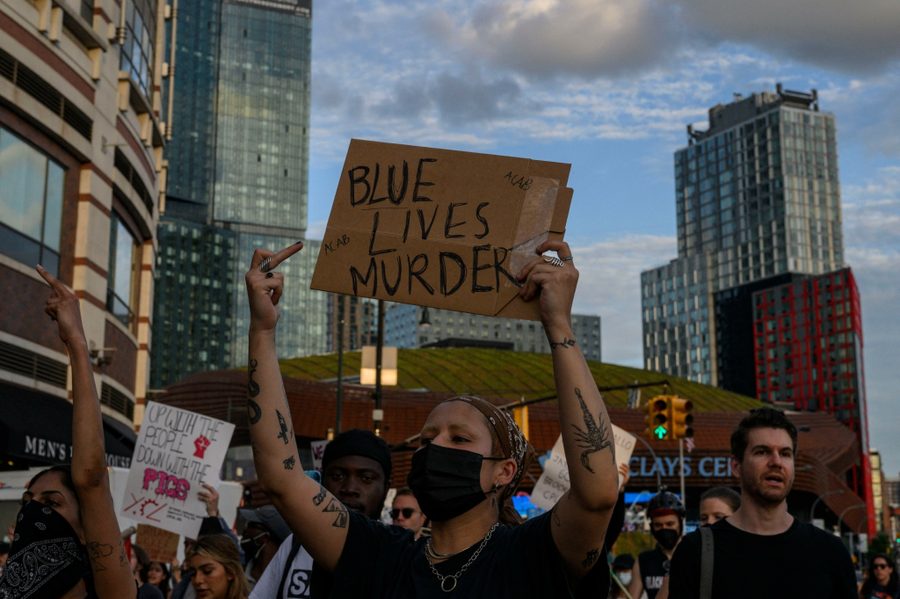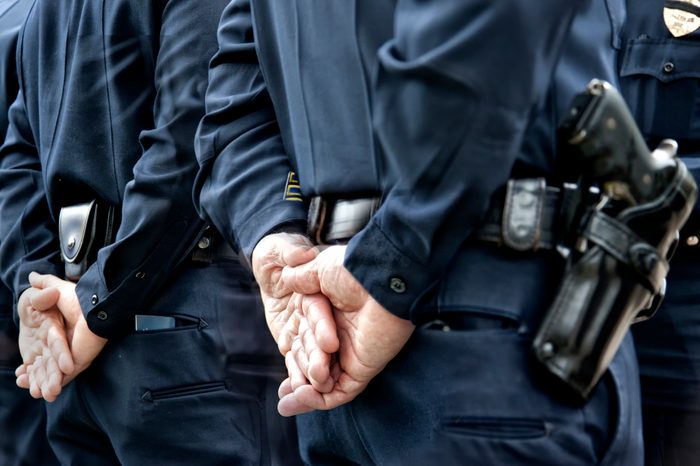There Were Only 12 Days Last Year When Police Didn't Kill Someone
Police killed nearly 100 people a month in 2022, data shows.
Sharon Zhang

This article was first published on Truthout.
Stunning new data shows that police across the U.S. killed 1,176 people in 2022, the highest number of police killings in a year since researchers began recording such data a decade ago.
According to Mapping Police Violence, there were only 12 days in 2022 when police didn’t kill someone. The majority of the killings took place in scenarios where no crime was alleged, or where police were called for things like nonviolent offenses or mental health checks. Only 31 percent of the people killed were in a situation where a violent crime had allegedly taken place, while 32 percent were killed while fleeing — situations in which police potentially put the public in danger while pursuing their victim.
In all, police killed over three people a day on average last year, adding up to nearly 100 people a month. These statistics are preliminary, as more killings from last year may still be recorded. So far, last year’s total is 31 more people than in 2021, when police killed 1,145 people. Since researchers began recording the data in 2013, police have always killed more than 1,000 people per year.
Police have relative impunity for these killings, the data shows; in 2013 and 2022, more than 98 percent of police killings did not result in an officer being charged with a crime, much less being convicted.
Black people were far more likely to be killed by police in 2022 than white people. Nearly 1 in 4 people that police killed in 2022 were Black, despite Black people making up only 13 percent of the U.S. population. Over the past decade, police have killed Black people at higher rates than white people in nearly every large city, the data shows.

The disparity is especially evident in certain cities — in Minneapolis and Boston, police killed Black people at a rate 28 times higher than they killed white people, while in Chicago, police killed Black people at a rate 25 times higher than they killed white people. Overall, between 2013 and 2022, Black people were three times more likely to be killed by police than white people were.
Jayland Walker was one of those victims in 2022. Police in Akron, Ohio, shot Walker, a 25-year-old Black man, at least 60 times from behind as he was fleeing. In Michigan, in April, police killed 26-year-old Patrick Lyoya, a refugee from Congo, shooting him in the back of the head while he was facedown on the ground after a traffic stop. Rob Adams was another Black victim of police; in August 2022, police in San Bernardino, California, shot the 23-year-old seven times in the back in a parking lot outside his work.
“These are routine police encounters that escalate to a killing,” Samuel Sinyangwe, founder of Mapping Police Violence, told The Guardian. “The reduction in the conversation around police violence does not mean that this issue is going away. What’s clear is that it’s continuing to get worse, and that it’s deeply systemic.”
This data roughly lines up with The Washington Post’s database of police killings. The Post found that police had killed 1,090 people in 2022, more people than any other year since the publication began tracking police killings in 2015.
The analysis comes two years after the Movement for Black Lives sparked a flood of protests against the police in 2020, in the wake of the murder of George Floyd, the killing of Breonna Taylor, and more. But despite the attention brought to the issue and the tireless work of abolitionist activists over the past years, cities have continued raising police department budgets, sapping funds away from critical public resources and increasing the power of law enforcement.
Copyright, Truthout.org. Reprinted with permission.
Sharon Zhang is a news writer at Truthout covering politics, climate and labor. Before coming to Truthout, Sharon had written stories for Pacific Standard, The New Republic, and more. She has a master’s degree in environmental studies. She can be found on Twitter: @zhang_sharon.



